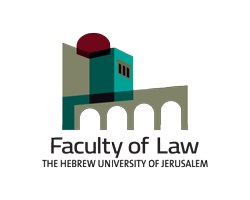| The Right to Education in Jerusalem, Jerusalem, December 7-8, 2006 | |
|
The seminar is an initiative of the Academy-Community Partnership for Social Change in partnership with: Wellspring for Democratic Education, BaKehila ("in the community") and Mahapach-Taghir. Approximately 80 students participated in the seminar, all of whom are involved in educational work in different frameworks across Jerusalem, and most of whom receive Perach (national tutorial project) scholarships.
The seminar's objectives were to expose engaged students in Jerusalem to important information and questions concerning education in the city, facilitate an encounter and dialogue for mutual learning of students working with youth in the framework of different educational organizations, and create connections between different organizations in Jerusalem.
Thursday, December 7:
15:30 - Gathering and refreshments.
16:00-17:30 - Panel: Education in Jerusalem
- Chair: Dr. Daphna Golan, Director of Academy-Community Partnership for Social Change
- Mrs. Sohaila Abu Gosh, Vice Director in Charge of East Jerusalem, Manchi (Educational Administration of Jerusalem)
- Mr. Moshe Shriki, Principal, Kedma Junior High and High School
- Mr. Abed Al-Karim La'afi, Chair, Parents Committee
17:30-18:15 - Dinner
18:15-19:00 - Mr. Reuven Aberjil, the Black Panthers in Israel as a Chronicle of Struggle
19:00-21:30 - Critical Pedagogy (work in small groups)
Friday, December 8:
8:00-12:00 - Study tour of the separation barrier in Jerusalem, from Gilo to Kalandiya, guided by Adva Rodogovsky from Ir Amim.
12:00-13:30 - Summary and discussion in small groups
Panel: The Right to Education in Jerusalem
Summary of presentations of speakers:
Mr. Reuven Aberjil, About the Black Panthers as a Chronicle of Struggle.
Reuven Aberjil, one of the founders of the Black Panthers movement in Israel, told the story of the struggle of the Mizrachim (Oriental Jews) in Israel. He spoke of the Jewish immigration waves since the 19th century and up to the establishment of the state of Israel, focusing on the behavior towards the Jewish immigrants from the Arab states at the beginning of the 1950's. Mr. Aberjil described the discriminatory treatment in the absorption of the immigrants from the Arab states: in the preliminary stages they were placed in transit camps, and the means of their assimilation were inferior to those that other groups received. As Mr. Aberjil noted, it is possible to point at discrimination when examining the discourse in the media during that period: the media announced the arrival of the large population group from the Arab states, while at the same time a group of the same size arrived from Europe. Mr. Aberjil related to the comparison that may be made between the Black Panthers and the Arabs in the state, that live in disadvantaged neighborhoods such as Katamon, Wadi Salib and Musrara. The description of the struggle of the Black Panthers raised questions and interest among the students.
Critical Pedagogy workshops.
At the end of the first day the students were divided into smaller groups, for critical pedagogy workshops. The objective of the work in the groups was to process the knowledge presented during the first day of the seminar, in relation to the students' educational projects in the organizations. The questions raised, among others: does the students' action maintain the current inequality in education, or does it contribute towards change? Some of the students said that the information presented about East Jerusalem is not relevant to their work, while others stated that they learned a lot from the presentations in the first part of the seminar, things that are important for their educational work.
Study tour for understanding the impact of the Separation Barrier upon the education system in Jerusalem.
The objective of the study tour was to expose the students to the reality in Jerusalem, and the influence of the wall or separation barrier upon education in the city. The tour went through neighborhoods in which certain schools did not exist until recently, such as Zur Baher, in which about 1,000 students had to study outside the neighborhood because a building or a lot for construction of a school was not found. This is in comparison to the settlement neighborhood of Har Homa, in which kindergartens and schools were built prior to the arrival of the residents. Further, the tour visited Shofat refugee camp, which is under the jurisdiction of the Jerusalem municipality, yet has been left on the Palestinian side of the Separation Barrier, due to security and demographic objections.
The tour was concluded at Brigham Young University in Mt. Scopus, where the processing of the study tour and conclusion of the seminar took place. After a short plenary session the students were divided into four groups. The group discussions related to the seminar in general, and the study tour in particular, touching upon the difficulties, the learning and conclusions.
In the evaluations filled at the end of the seminar the students expressed a desire and need to participate in an additional program in order to work together and try to examine ways for changing the harsh reality in Jerusalem.
Further, the students expressed interest in an additional seminar that will provide more tools for their work in the organizations.
|
|

